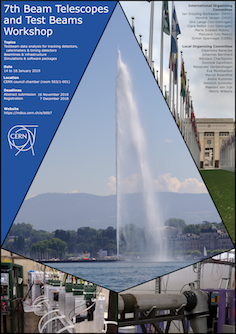Speakers
Description
The High Luminosity Large Hadron Collider (HL-LHC) is expected to start in 2026 the delivery of 3-4/ab of proton-proton collisions with up to 200 collisions per proton bunch crossing.
The electronics of the ATLAS Tile Calorimeter has to be upgraded to cope with longer latencies of up to 35 µs needed by the trigger system at such high pileup levels and higher read-out rates. The expected radiation doses will also exceed the qualification range of the current readout system.
In 2016-2018, the beam from the the Super Proton Synchrotron (SPS) was used to test the read-out of the demonstator of the proposed digitizer/shaper and pre-processor cards. Modules of the Tile Calorimeter were irradiated with high energy pions, electrons, muons and kaons in the North Area of CERN and the signals were read-out by the demonstrator electronics.
In additions,a test system based on Multi-anode photo-multipliers (MA-PMs) has been used to read-out the signals of the individual fibers on PMT bundles of the Tile Calorimeter.
This presentation summarizes the setup for particle identification and study of the ATLAS Tile Calorimeter data taking in preparation for the production of main boards and digitizer/shaper boards for the photo-multiplier tubes and the results of the calibration and tests of the MA-PMs. The fully assembled and tested demonstrator of the upgrade electronics will be installed already in 2019, during the LHC long shutdown and will read-out a slice of the ATLAS Tile Calorimeter during Run 3. The pulse shape, uniformity, timing precision and read-out capability of the proposed electronics for the HL-LHC upgrade are demonstrated.
